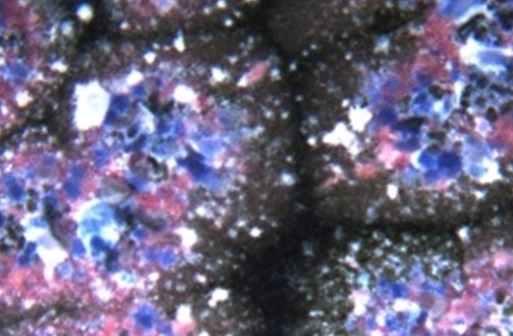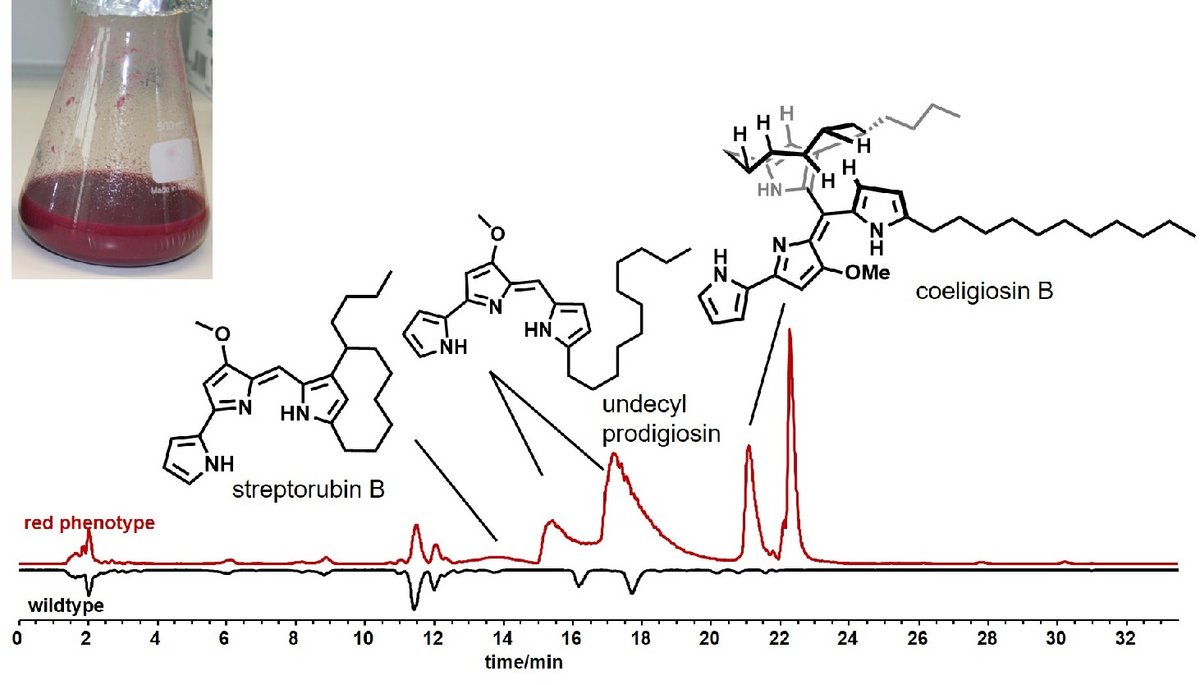Induction of secondary metabolite production in Streptomyces coelicolor by heavy metal ion stress
Abiotic factors, such as heavy metal ion stress, strongly influence the life of microorganisms. In presence of heavy metal ions the model Streptomycete Streptomyces coelicolor reacts with drastic metabolic changes. S. coelicolor shows a microdiverse growth, i.e. one can observe on petri dishes many differently pigmented phenotypes (Figure 1).

Figure 1: In presence of Co2+ ions Streptomyces coelicolor exhibits the formation of many differently pigmented phenotypes
The red phenotype produced large amounts of prodigiosins, undecylpyrrol and streptorubin B, as well as novel compounds, e.g. coeligiosins (Figure 2), that are obviously produced by a stress induced variation of the prodigiosin biosynthesis.

Figure 2: Comparison of the LC-MS profiles of the red phenotype and Streptomyces coelicolor wildtype. The red phenotype produces large amounts of prodigiosins and also the prodigiosin derivatives, coeligiosins.
We are interested to understand the molecular basis of such adaptations and to address the biological role of the induced compounds.
A. Morgenstern, C. Paetz, A. Behrend, D. Spiteller, Divalent Transition-Metal-Ion Stress Induces Prodigiosin Biosynthesis in Streptomyces coelicolor M145: Formation of Coeligiosins. Chemistry - A European Journal, 2015, 21, 6027-6032.
